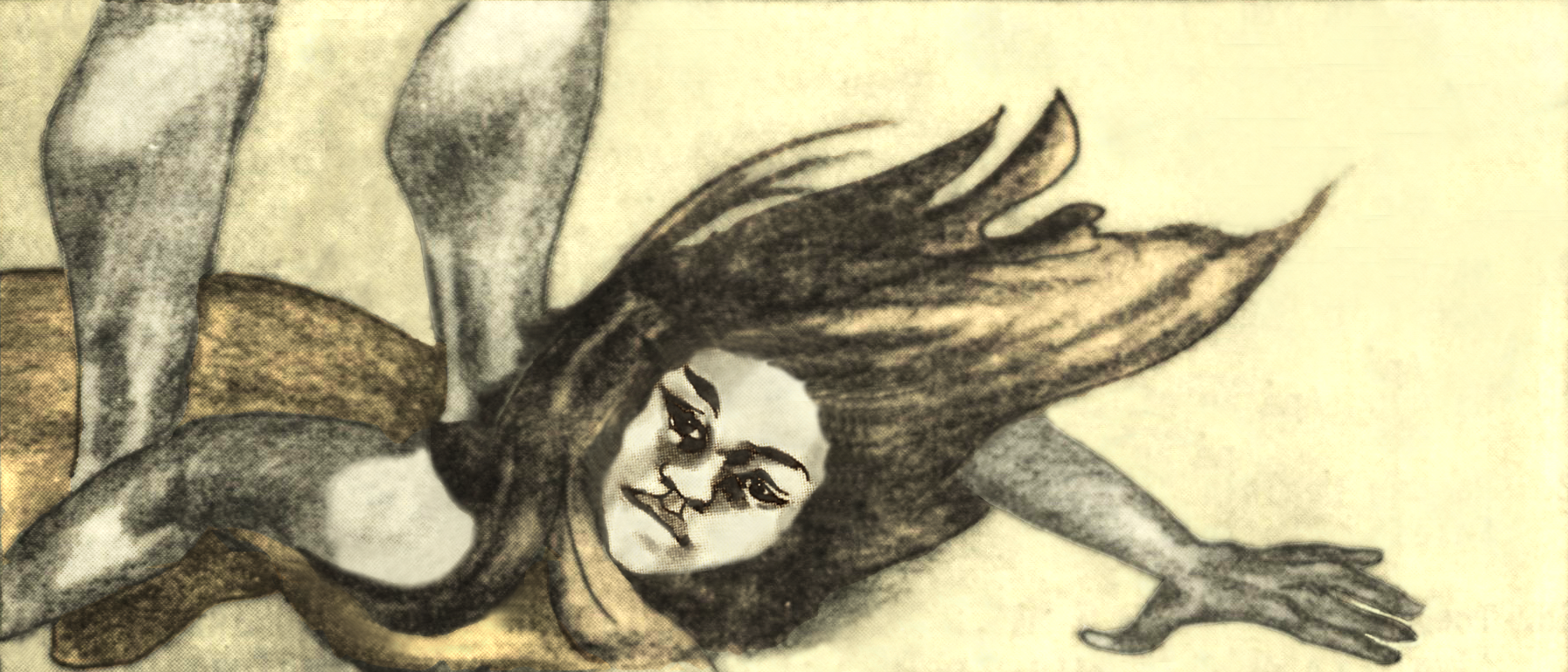‘0 Pulotu ‘o le igoa o se motu i Sisifo,ma Papatea ‘o se motu i Sasa’e. ‘0 Elo, le tupu o Pulotu, sā iai sana fānau e to’afa: ‘0 Ua, FalT, Lagi, ma Tala.

‘0 le tasi aso na asiasi atu ai lenei fānau ‘i Papatea, ‘a e sā tali leagaina ‘ilatou ma o’o ai *Tna fa’alumaina e tagata Papatea. Sā taia le tama ‘o Ua, ma na maua mai ai le ‘upu “taua” (tā ua) e fa’auiga ‘i le fetaua’i…’0 le tasi tagata Papatea sā tu’u lona vae ‘i le ua o Fali, na maua mai_ai le fuaitau: le’ā soli le falT,” ‘o lona uiga, “taeao ‘o_le ‘a tatou tau, po ‘o vāgai le taua.” ‘0 isi sā lātou tu’u- feanu i a Lagi, na maua mai ai le alagāūpu “‘Ua anu ‘i Laqi”, ‘o lona uiga ‘o se tagata amio lemigao.
‘Ina ‘ua logo Tupu Elo ‘i le fa’alumaina o lana fānau, sā matuā to atama i ai ma malaga atu loa e tau ma tagata Papatea. ‘0 le ulua’i taua lea i tala fa asolopito. Sā malaga atu Elo, tau, ma manumālō. Sā la fa apapateaina le motu ‘ātoa. ‘I lenei uiga na māfua mai ai alaaā upu nei:
1. ‘Ua ‘o le tomai o Elo, ‘o lona uiga ‘ua pei ‘o le to’atama’i o Elo.
2. ‘Ua fa’apapateaina, ‘o lona uiga ‘ua fa’a’umatia ‘atoa’atoa.
A ‘o vāgai lea_taua o le taui-ma-sui, pei ‘ona tā’ua i luga, ‘e to’atele ni tagata sā taumafai e fa’asao ‘ilatou lava i le feosofi ‘i o latou paopao; peita’i, sa tuliloaina ma fāsia lātou na maua. ‘0 ni isi o lātou na mafai ona sōsola, sā taunu’u ‘i Sāmoa. ‘0 le tasi ulugāali’i, ‘o Tutu ma Ila, na taunu’u ‘i le tasi o motu; ‘o le isi, ‘o ‘U ma Polu, na taunu’u ‘i le isi motu; ma le tasi, ‘o Sa ma VaVi na ulua’i tūvae ‘i lona tolu o motu. ‘’Ona ‘o nā ona pō sa_le’i ‘ainā ai lava se tasi o nei motu, ma ‘o_le mea lea, ‘o le leigoā—’e o’o lava ‘i le igoa o le atumotu “Sāmoa” sā le’i iloa–‘o lea sā lātou fa’aigoa- ina ai nei motu ‘ese’ese ‘i le feso’ota’iga o lātou igoa, pei ‘o Tutuila, ‘Upolu, ma Savai’i.
‘E fōliga mai i ni fānau pei ‘o nei tala, ‘e fa’amāonia ai ‘o nei i loa e matuā leva tele, ma ‘ua le mafai ai e se tasi o nei talatu’u ona maua mai mo ‘itātou se tala’aga tonu o nei motu, po ‘o ai po ‘o anafea fo’i na ‘ainā ai ‘ilātou.
Here Brother Fred Henry discusses whether or not factual, historical “truth” matters as much as the strength and persistence of the myth or story itself, acknowledging that people cling to their stories as if inherently true in other, equally important ways. He describes as an example the first stories of immigration, war, naming, and the first settlement of the people on Savai’i. He Writes:
“Besides the myth regarding the divine origin as it was claimed by the highest chiefs of Upolu, and especially by the Tui-Manu’a, there is another very ancient legend of immigration. In which even at the present time, most natives place implicit faith. It runs like this:
Pulotu is the name of an island in the West and Papatea an island in the East. Elo, the King of Pulotu, had four children: Ua (neck), Fali (long grass), Lagi (heaven), and Tala (tale).

One of these children visited Papatea, but they were badly received, and even grievously insulted by the Papateans. The boy Ua was struck on the neck (Ua), and hence the word ‘taua’ (taua) has come to mean ‘War’. Another Papatean put his foot on the neck of Pali and hence the saying;
‘O le soli le fali’ – “tomorrow we shall fight,” or “War is unavoidable.”
Meanwhile, others surrounded and spat on Lagi and hence the proverb, ‘Ua anu i Lagi’ – “to behave like a boor.” When King Elo heard of the insult perpetrated on his children, he became enraged and went to fight the Papateans. This was the first war in history. Elo went, fought, and conquered. Then he made a clean sweep of the whole island. From this event are derived the proverbs:
“Ua o le tomai o Elo, Ua fa’apapateaina,” – It is like the rage of Elo; All has been utterly destroyed.
While the above war of revenge was in progress, many people tried to save themselves by taking to their canoes, but they were pursued and killed when caught. It happened that several of the fugitives reached Samoa. One couple, Tutu and Ila, reached one of the islands; another, U and Polu, landed at another, and Sa and Vai’i were the first to put their feet on a third one. As, at that time, none of these islands was inhabited and, therefore, without name – even the very name of the group ‘Samoa’ was then unknown – they named the different islands by joining their respective names: Tutuila, Upolu and Savai’i.
Childish as such an obvious myth may seem to us, it proves that these names are very old, so old that none of their traditional stories can furnish us with a plausible account of these islands or by whom, and when they were first inhabited.”
Comments are closed here.